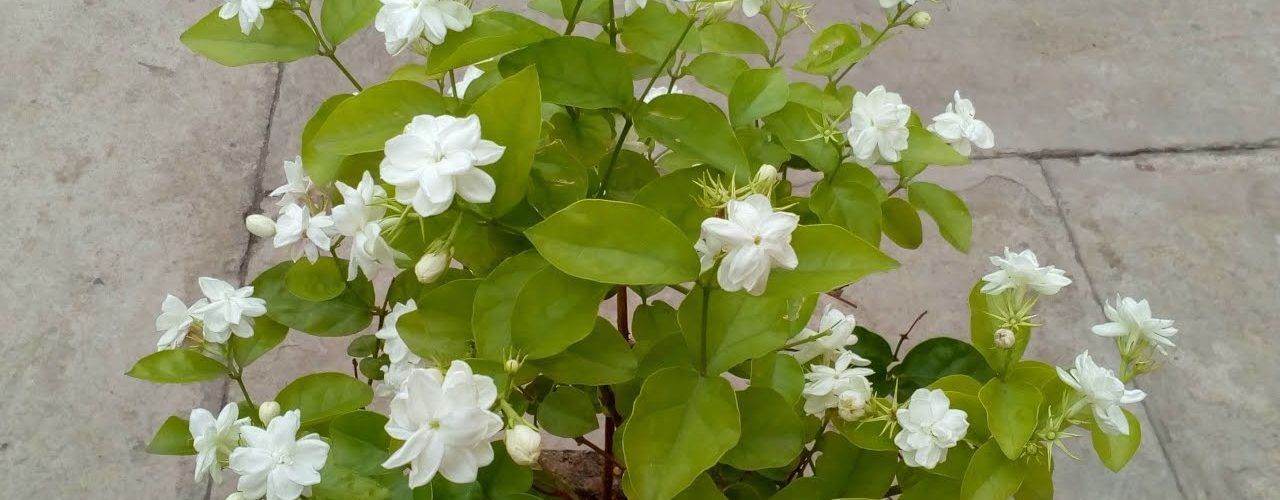Growing Jasmine, in particular indoors, is an interesting diversion for any plant loving soul. Growing jasmine indoors originated in China. These tropical vines were grown originally because of their wonderful smelling fragrance. Today, Jasmine is still grown inside because of its beautiful and potent smell, and it can simply and effectively be grown inside in the winter time months, while it does well outside in the summer months. This article goes through the step by step directions for properly and effectively growing Jasmine.
Contents
Materials and Items Necessary for the Project
– A flower pot
– Water
– Soil, bark or moss and fertilizer mixture
– Fertilizer
– A lattice
– A properly lit room
Planting the Jasmine
Planting a Jasmine inside the house requires you to begin by putting your Jasmine into a small or medium sized pot or planter. This should be filled with a combined mixture of fertilizer and soil. You will have even better results with a mixture made of bark, moss, and vermiculite, since these items assure that moisture remains in the soil. So that the Jasmine will be more likely to climb, you ought to place a piece of trellis or lattice next to the pot and then affix the Jasmine to it.
Location of the Jasmine
It is important that you put the Jasmine somewhere that it will get a good four to five sunlight hours every day. In the summer time, your Jasmine ought to be put in a south facing window each day from dawn until twilight. In the summer months, it is important to keep Jasmine plants in a range of between seventy to eight degrees Fahrenheit. Jasmine living indoors will often become irritated if you move them too quickly from a spot which is shady to one which is sunny. The leaves could fall off or at the least turn yellow. Because of this it is a smart idea to gradually relocate a Jasmine plant from shady places to those of sunshine.
Properly Watering Your Jasmine
Jasmines do fine on a window sill facing either east or south, but they must be given sufficient amounts of water to do so. So often as the soil becomes dry, you should water your Jasmine. You have to ensure that your Jasmine plant is not a victim of drought like conditions, since this quickly kills tropical plants like Jasmines. Every day you should test the soil at the very least one time. Should it not feel moist, then water it. Remember, though, that you should not over-water your Jasmine either.
Fertilizing Your Jasmine
Jasmines grown inside the house also must have a good amount of fertilizer. This plant prefers a good combination mixture of phosphorous, potassium, and nitrogen. If you are trying to make your Jasmine sprout flowers, then use a good fertilizer with a higher phosphorous content. Only healthy plants need to be fertilized. If they are not, then it is better to only apply it once to twice in a given month. Make sure that your fertilizer is not overly nitrogen-rich.
Transplanting the Jasmine to a Larger Pot or Outdoors
When you reach the point that your Jasmine’s soil is quickly becoming dry following a watering, then this is a sign that you need to transplant the Jasmine. The new pot must be a good two to three inches bigger than the present one. When you are going through the re-potting process, check the roots. If the Jasmine shows a tightly bound up root ball, then the roots will need to be reduced along the sides. This encourages newer roots to grow up. Following the re-potting process, you do not typically have to fertilize the plant for about a year. During the summer, you might plant your Jasmine outdoors. Remember that they thrive in conditions with some shade, and a medium amount of sunlight. In the fall, when temperatures begin to drop again, is the time to re-pot the Jasmine and bring it back indoors. It must have water and warmth in the winter time to keep growing well.
Related Resources:
Garden Guides: Grow Jasmine Indoors



